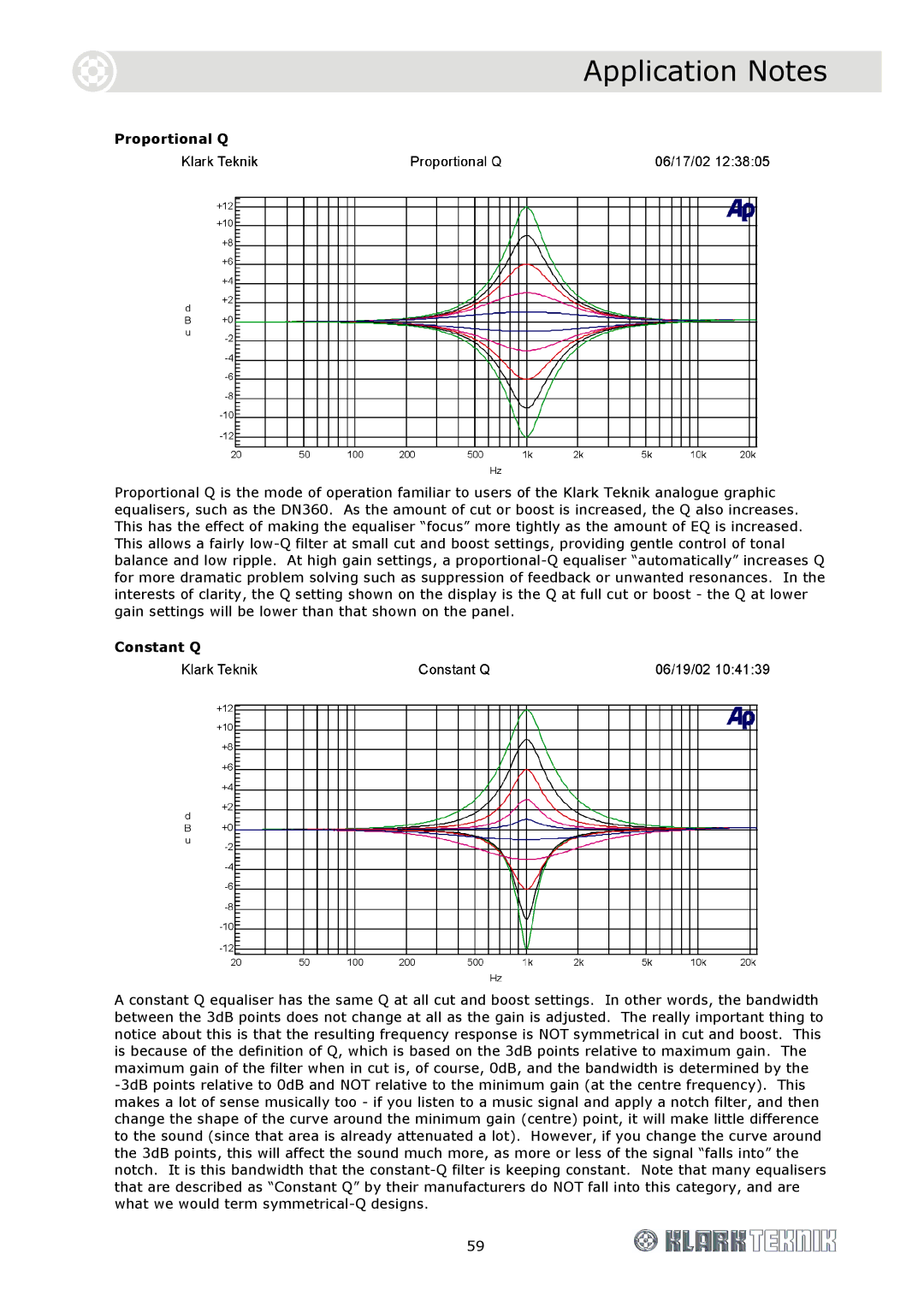Application Notes
Proportional Q
Proportional Q is the mode of operation familiar to users of the Klark Teknik analogue graphic equalisers, such as the DN360. As the amount of cut or boost is increased, the Q also increases. This has the effect of making the equaliser “focus” more tightly as the amount of EQ is increased. This allows a fairly low-Q filter at small cut and boost settings, providing gentle control of tonal balance and low ripple. At high gain settings, a proportional-Q equaliser “automatically” increases Q for more dramatic problem solving such as suppression of feedback or unwanted resonances. In the interests of clarity, the Q setting shown on the display is the Q at full cut or boost - the Q at lower gain settings will be lower than that shown on the panel.
Constant Q
A constant Q equaliser has the same Q at all cut and boost settings. In other words, the bandwidth between the 3dB points does not change at all as the gain is adjusted. The really important thing to notice about this is that the resulting frequency response is NOT symmetrical in cut and boost. This is because of the definition of Q, which is based on the 3dB points relative to maximum gain. The maximum gain of the filter when in cut is, of course, 0dB, and the bandwidth is determined by the -3dB points relative to 0dB and NOT relative to the minimum gain (at the centre frequency). This makes a lot of sense musically too - if you listen to a music signal and apply a notch filter, and then change the shape of the curve around the minimum gain (centre) point, it will make little difference to the sound (since that area is already attenuated a lot). However, if you change the curve around the 3dB points, this will affect the sound much more, as more or less of the signal “falls into” the notch. It is this bandwidth that the constant-Q filter is keeping constant. Note that many equalisers that are described as “Constant Q” by their manufacturers do NOT fall into this category, and are what we would term symmetrical-Q designs.
59

